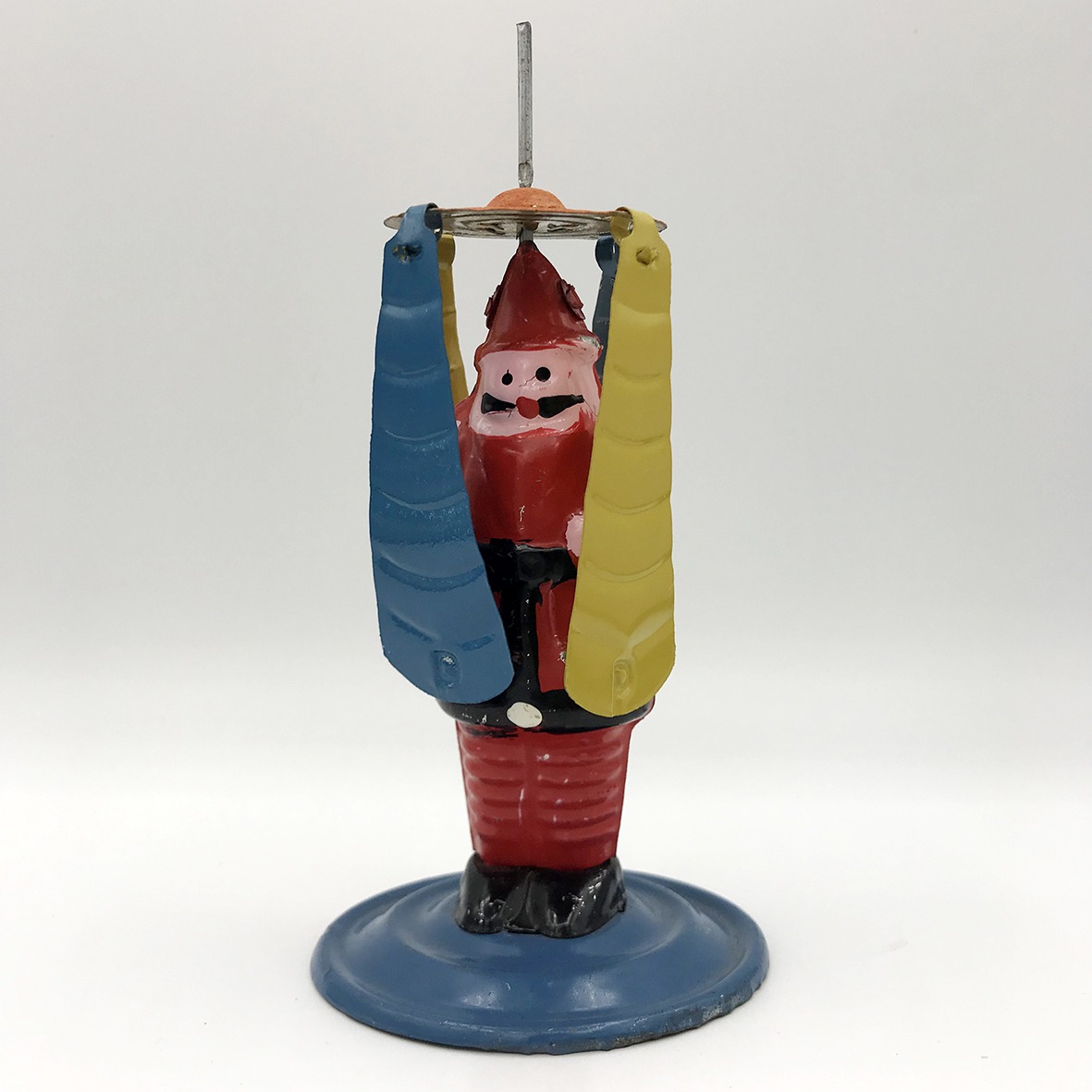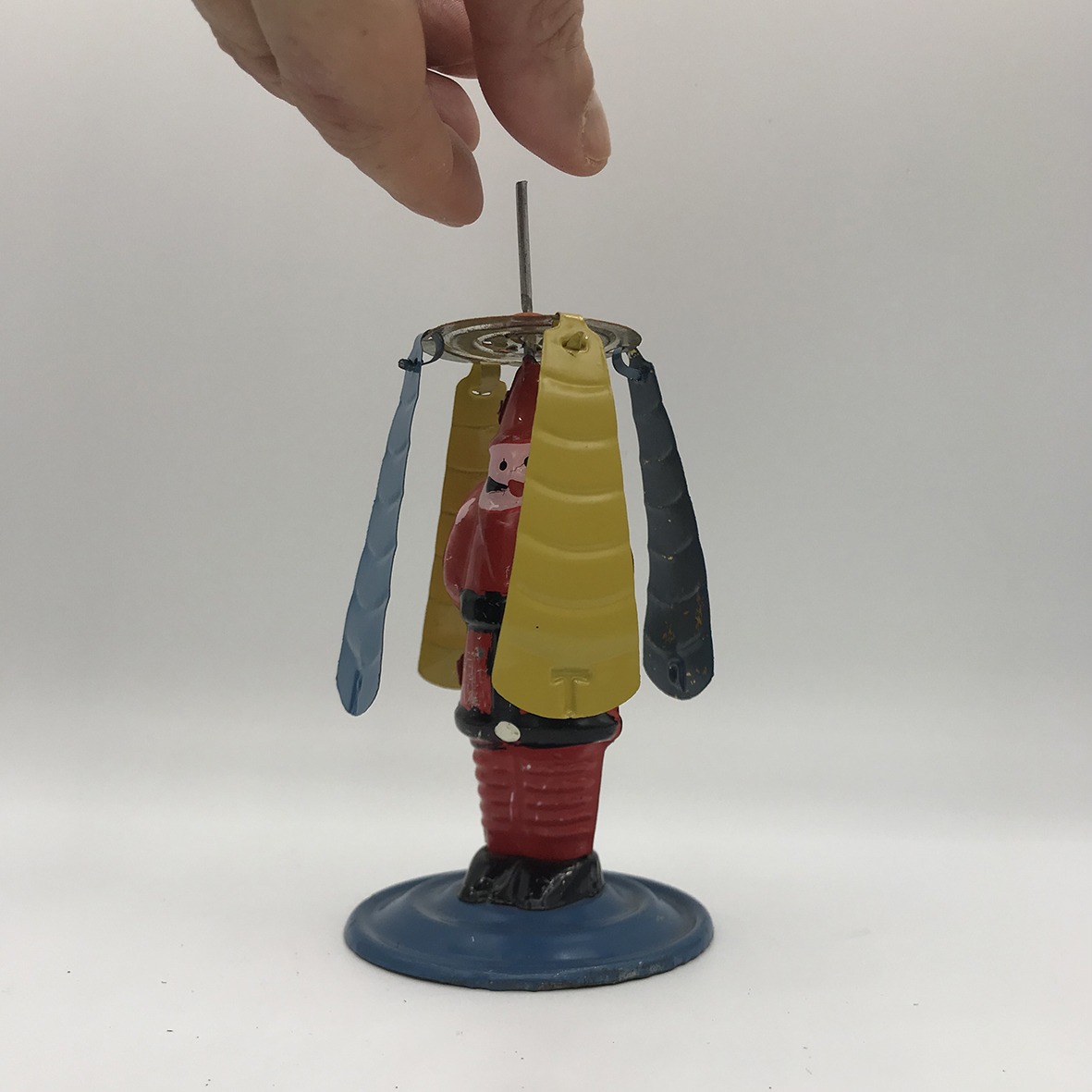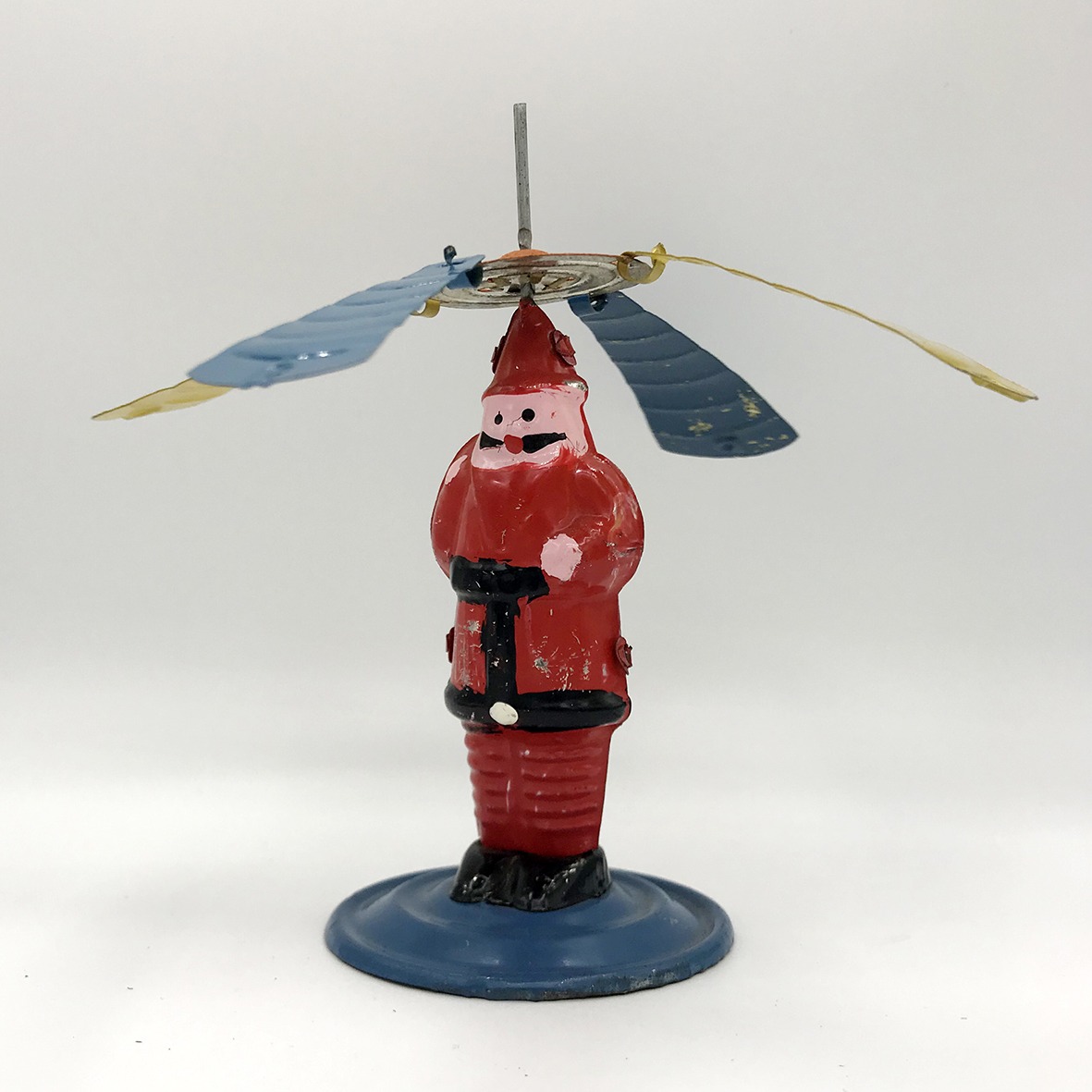Pai Natal folha de Flandres - AML 1950/1960
Brinquedo tradicional de lata produzidos por Armindo Moreira Lopes(AML).
Armindo Moreira Lopes foi um fabricante de brinquedos de lata (folha de flandres), que em 1940 e apenas com 18 anos criou a sua própria oficina em Valongo. Fabricou de forma artesanal cerca de 365 modelos diferentes, um para cada dia do ano. Distribuído por Grupo Artecri, que em tempos trabalhou em parceria com AML.
Nas pás que rodam podemos observar as letras: “R”, “A”, “P”, “A”.
Esta adaptação do mais conhecido rapa de madeira português permite jogar o tradicional R (rapa), T (tira), D (deixa), P (põe) a botões, feijões, rebuçados, pinhões, etc.
Tamanho: 12 cm altura x 7 cm diâmetro
NOTA:
O Jogo do Rapa, que se crê ter por origem no Dreidel, um jogo tradicional judaico, é ou foi um jogo infantil tradicional muito popular em Portugal.
No início de cada jogada, os jogadores devem sortear a ordem de jogar. O primeiro será o “primas”, o segundo o “xigas” e o terceiro o “restas”. Se houver mais de três jogadores, será atribuída a ordem numérica, ou seja, quarto, quinto, sexto, etc. Cada jogador deve colocar no centro do plano do jogo uma prenda (um feijão, por exemplo). O rapa é rodopiado no centro da mesa, por cada jogador, de acordo com a ordem estabelecida, devendo rodar até cair aleatoriamente. A letra correspondente à face voltada para cima significa a acção que cada jogador deve tomar.
E, à vez, cada um vai jogando o dado. O T é de Tira e o jogador tira um feijão. O D é de Deixa e tudo fica igual. O P é de Põe e o jogador deve colocar no meio mais um feijão. O R, claro, é de Rapa e o jogador rapa o jogo, ou seja, recolhe tudo.
Para se jogar ao Rapa é necessário um pião em madeira de quatro faces, um piorra (um pião muito pequeno) -ou um Rapa em chapa – e um punhado de feijões, pedras, moedas ou o que se quiser.
Santa Claus made of tin plate
Traditional tin toy produced by Armindo Moreira Lopes (AML).
Armindo Moreira Lopes was a manufacturer of tin toys (tinplate), which in 1940 and only at the age of 18 created his own company in Valongo. It has designed about 365 different models, one for each day of the year. Distributed by Artecri Group, which once worked in partnership with AML.
On the blades we can see the letters “R”, “A”, “P”, “A”.
Adaptation of the most well-known toy, “Portuguese wooden rapa”, allows to play the traditional R (“rapa”/scrape), T (“tira”/draw), D (leaves), P (put) to buttons, beans, sweets, pinions, etc.
Size: 12 cm height x 7 cm diameter
The Rapa Game, which is believed to have origin in Dreidel game, a traditional Jewish game, is a popular traditional children’s game in Portugal.At the beginning of each play, players must indicate a play order.
The first will be the “primas”, the second the “xigas” and the third the “restas”. If there are more than three players, it will be assigned the numerical order, ie, fourth, fifth, sixth, etc. Each player must put in the center of the game plan a gift (a bean for example).
The rapa is rotated in the center of the table, for each player, according to a defined position, having to turn until it falls at random. A letter corresponding to the face up signifies the action that each player must take.
And, at his turn, each player is throwing the dice.
The T is from “Tira” (draw) and the player draws a bean. The D is “Deixa” (leave) and everything remains the same. The P is from “Põe” (put) and the player must put in the middle another bean. The R, of course, is from Rapa and the player scrape the game, that is, collects everything.
For playing the Rapa you need a piece of wood with four faces, a worm (a very small piece) – or a Rapa in tin plate – and a handful of beans, stones, coins or whatever.







